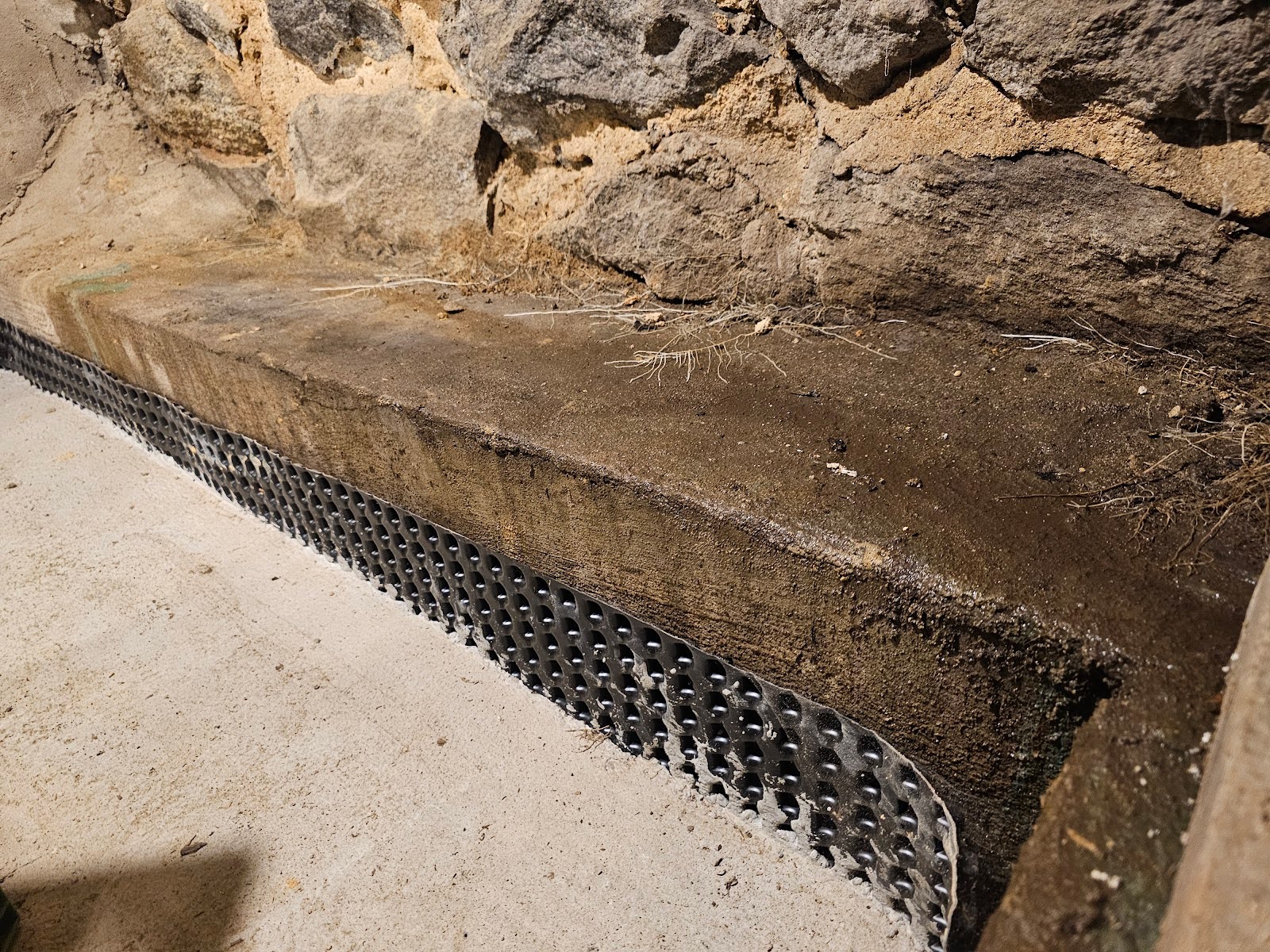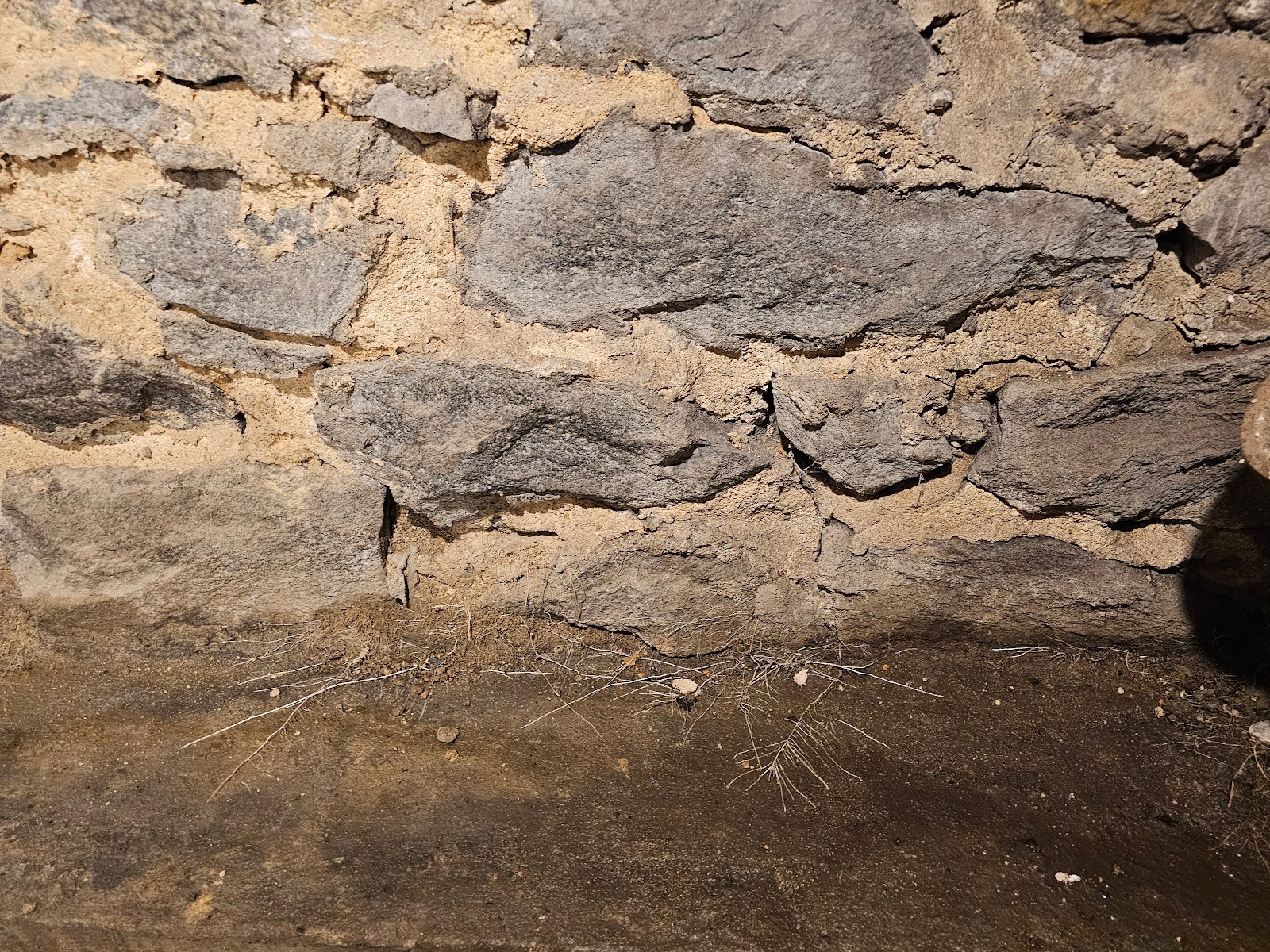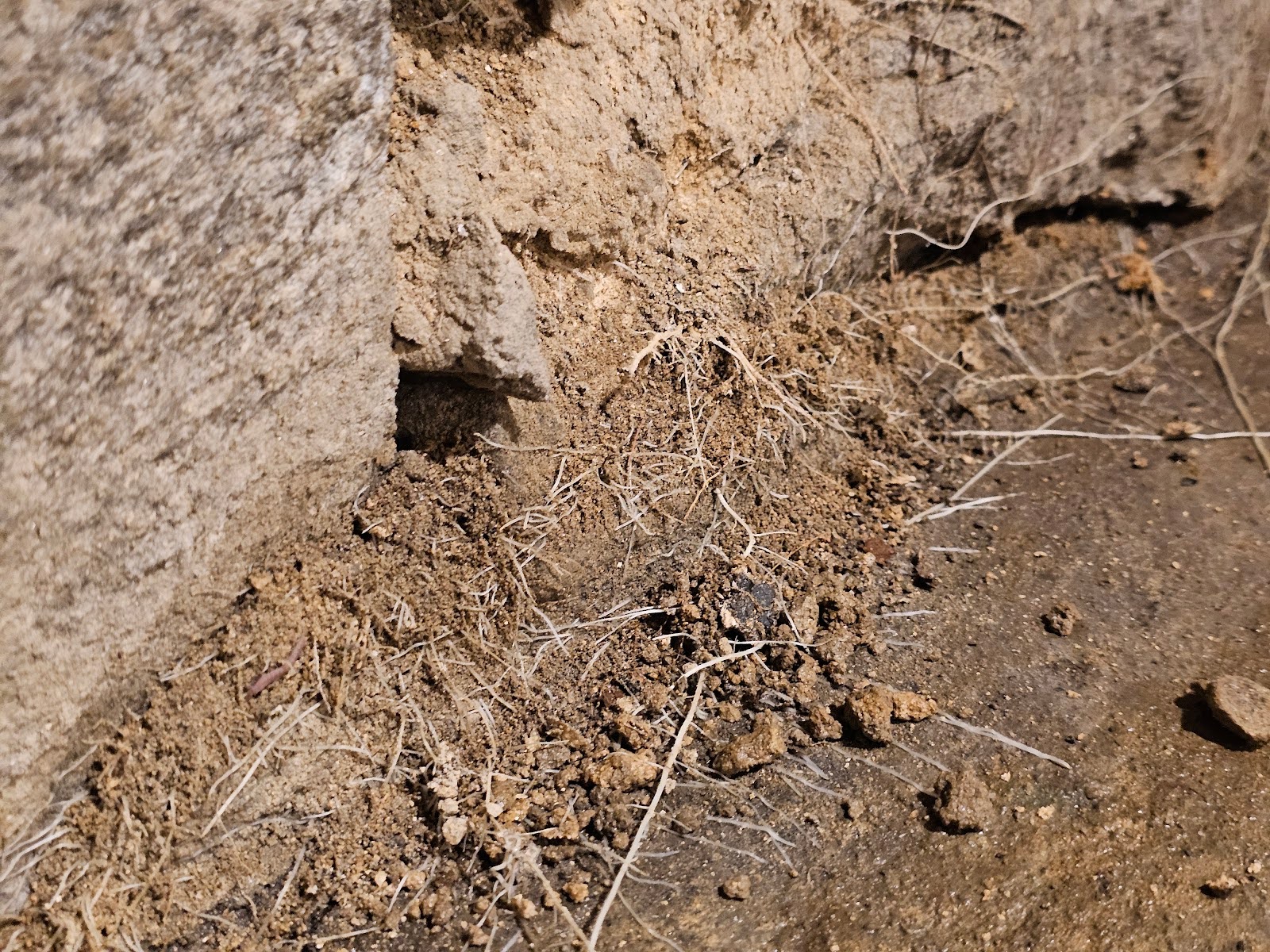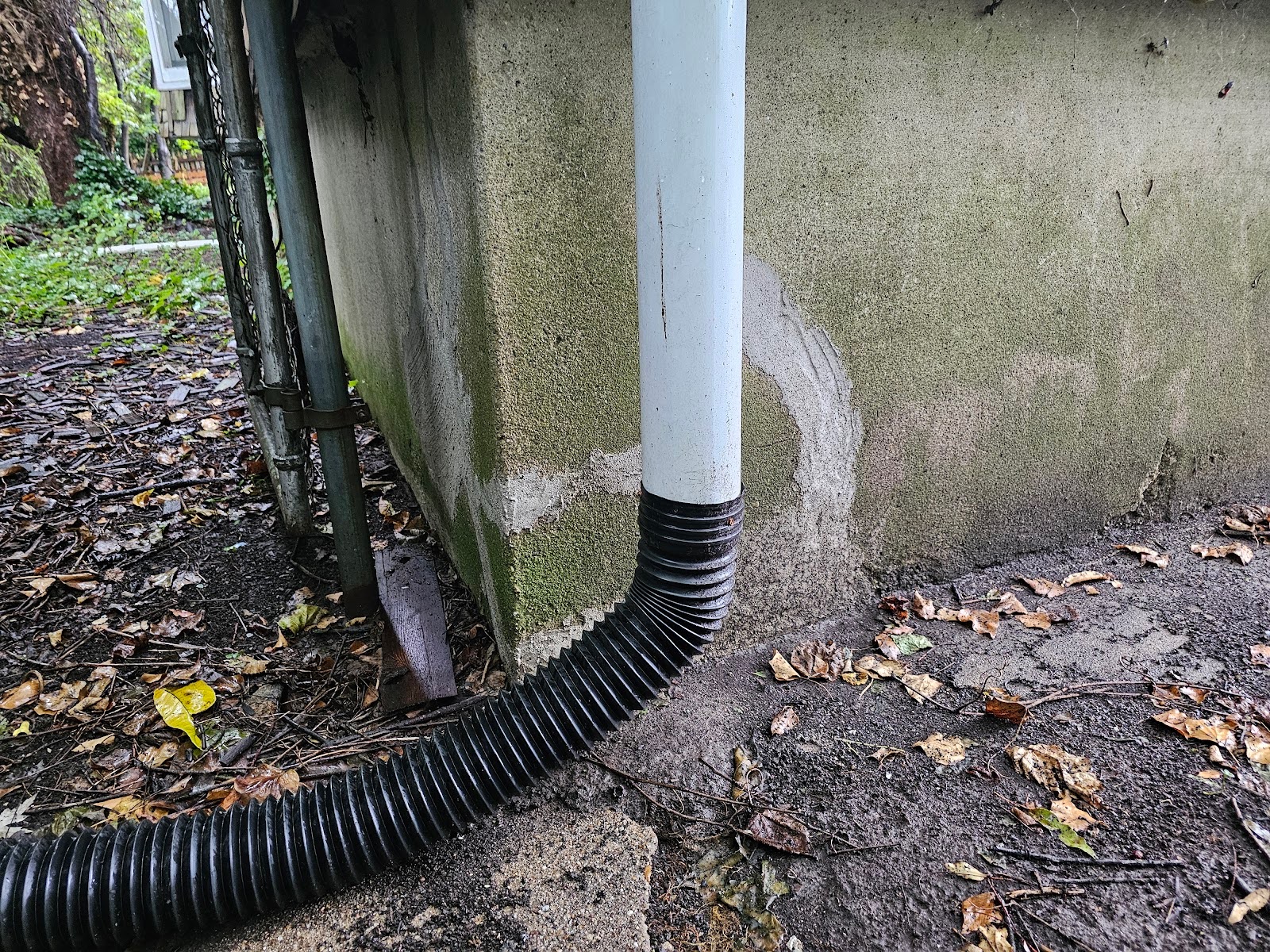Protect Your Masonry: Addressing the Challenges of Below Grade Moisture
In our previous blog post, we touched on the issue of ground moisture and its impact on masonry deterioration near below-grade exterior stairways. Today, we’ll delve deeper into this phenomenon, looking at why these areas are particularly vulnerable and the interplay of factors that lead to accelerated decay of historic brick masonry.
The picture below shows the foundation wall in a basement, below grade, which has already been underpinned and had a waterproofing system installed around the perimeter of the Interior side of the foundation. In this case, dimple board separates the concrete slab from the underpinned footing. That underpin footing is built in addition to the original footing and wall foundation. You can see though in the picture that the footing and foundation are wet. There is leakage at the base of that foundation. For the most part, the water ingress and associated damages are at least controlled, to an extent, by the waterproofing foundation system installed around the perimeter.

The wetness at this area has been a repeated cycle of over hydration, going on for years. Even though moisture at the base of a foundation, as shown in the picture below, can cause damage to a foundation, this damage and deterioration happens over a very long time scale. Unlike leakage at a roof, for example, this damage can take years to manifest in system failure or destruction.

Masonry often deteriorates faster at the foundation of walls in historic brick or stone structure buildings. A few specific characteristics of the nature of underground moisture are generally consistent. At first it might sound counterintuitive, but the ground beneath our feet and around the base of our buildings is rarely ever really dry. In fact, it’s generally a complex ecosystem of water, minerals, and organic matter.
In the next picture below you can see the same base of the stone wall shown in the pictures above, but more closely. At this location there’s a whole network of small hair-thin plant roots growing between the foundation and the footing.

Below grade moisture generally originates from several different sources:
- Precipitation: Rain and snow are primary contributors to ground moisture.
- Groundwater: Natural underground water tables fluctuate seasonally and as correlated to weather long-ranging patterns.
- Surface runoff: Water from higher elevations moves downslope, saturating lower areas.
- Artificial sources: Leaky pipes, irrigation systems, and poor drainage can add to moisture levels.
In the next picture below, you can see a roof downspout run through a corrugated pipe to leave the ground water away from the base and foundation. Generally, in the majority of the historic parts of Washington DC, yards are not quite big enough to have several feet of space between buildings, in most cases. The majority of the buildings in historic parts of the city were built at the property line either built together with an adjacent building or at a dry joint where a building was built next to an adjacent building at a later point in time. Overall, the majority of buildings are built-in rows, like the typical row homes.
In most cases, in that configuration or layout, the rain downspouts will run to a rain leader underground where water from there will be piped into the city’s sewer system. Not all cities are built this way, but this work in most parts of Washington DC were built with a combined rainwater sewer drain system.
The principles are the same though, here as the water is directed away from the foundation of the building, it’s intended to drain away through gravity below grade from the point where the pipe daylights after going below grade and coming back out. Without a continuous drain that pipes the water directly into the city system, it’s important to get the water as far away from the foundation as possible.
If water drains onto an above grade surface it can saturate the ground around the exterior of the building and then seep into the foundation of the building. Where there are waterproofing systems which collect and discharge the foundation water, this condition can be known or referred to as short-cycling. Short cycling is the phenomenon of water being pumped outside of the building, then saturating the adjacent ground, and soaking back into the foundation. Water in this type of condition will largely just continuously go in a pattern that repeats cycles of saturation at the foundation. This type of short cycling is problematic because at each iterative cycle, continuing slow damage and deterioration are happening to the foundation.

In our next blog article, in this coming week, will continue looking at this foundation and also discuss factors that contribute to below grade moisture and options for actions that can be taken to mitigate below grade moisture at both modern and historic masonry.
If you are looking for a masonry restoration contractor that takes historic preservation seriously, reach out to us. Our company can help.
You can reach us by telephone at (202) 796-7644 and you can reach us by email from the contact form on our website at https://duponttuckpointingmasonrydc.com/contact-us/.




